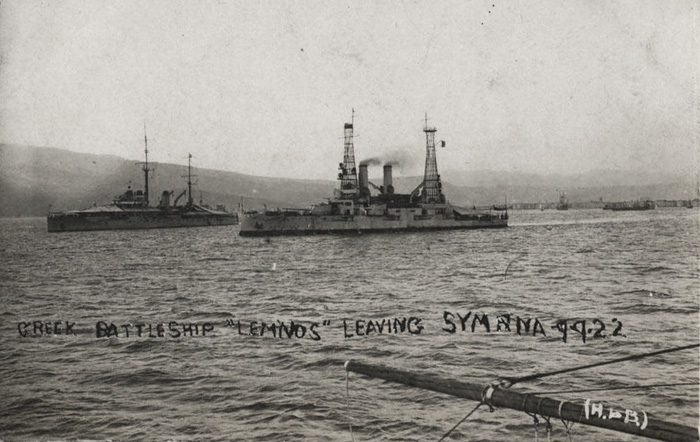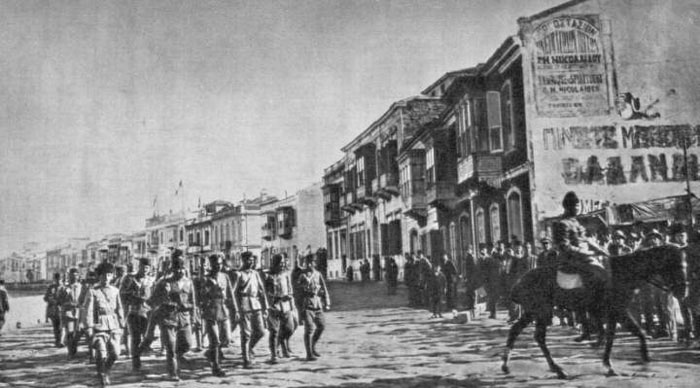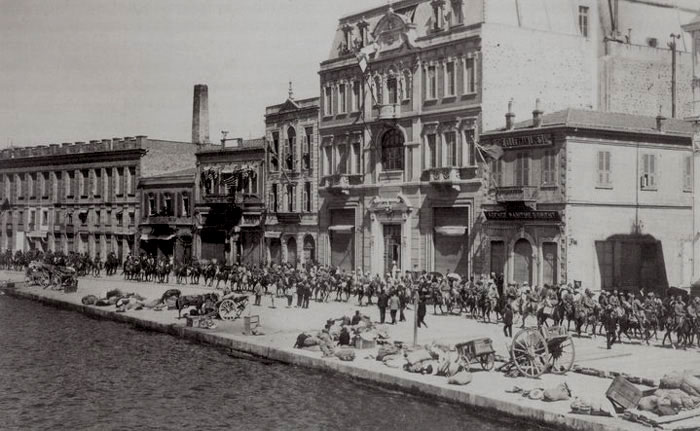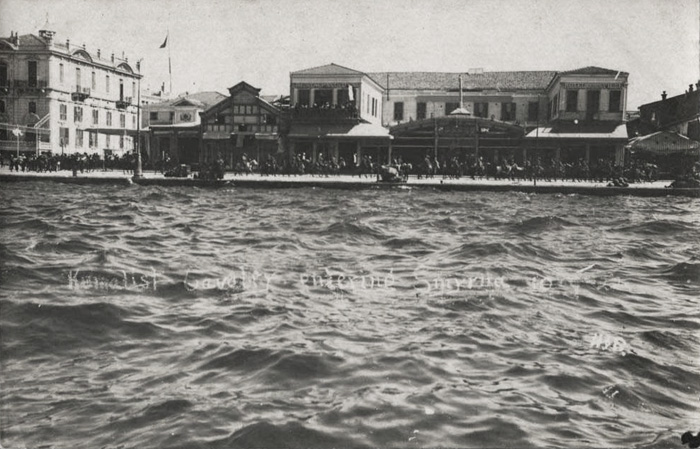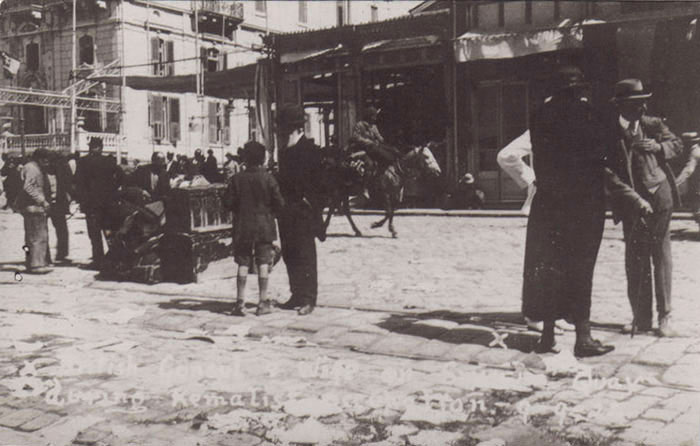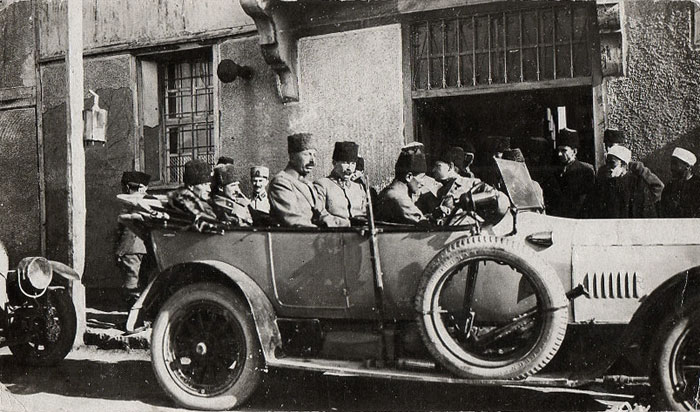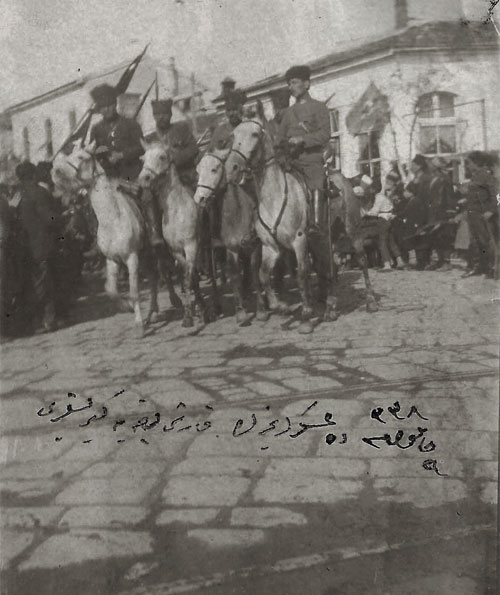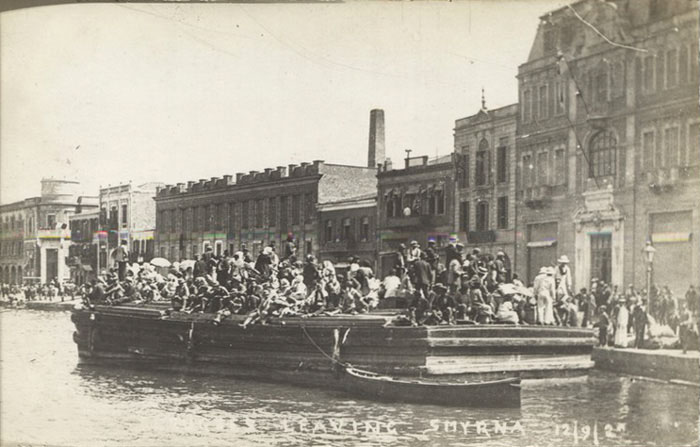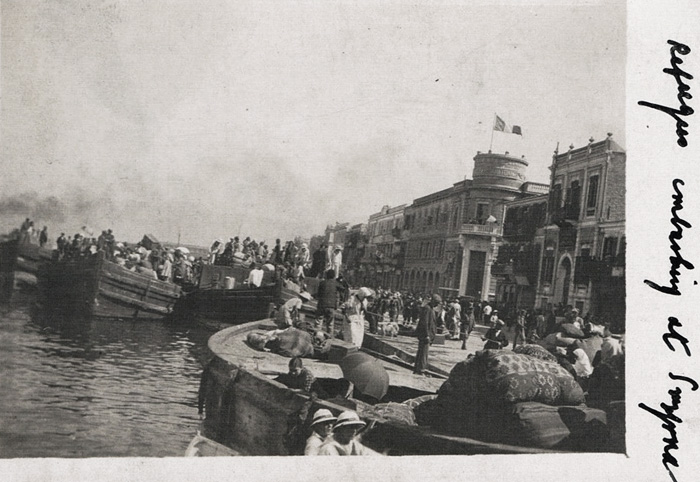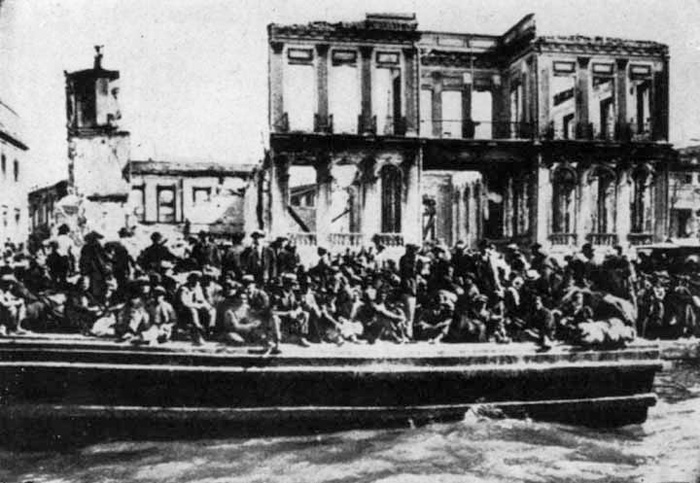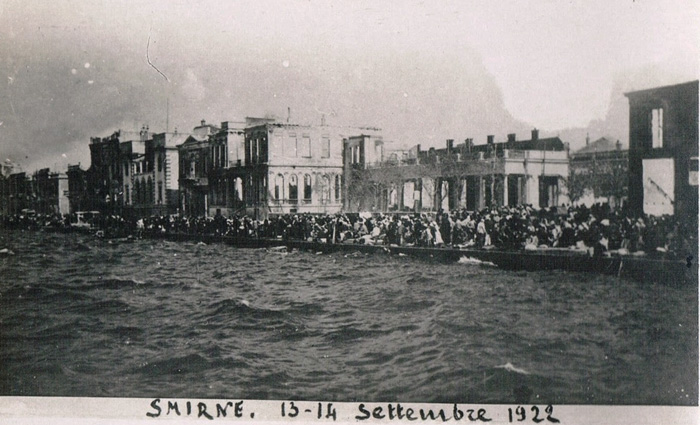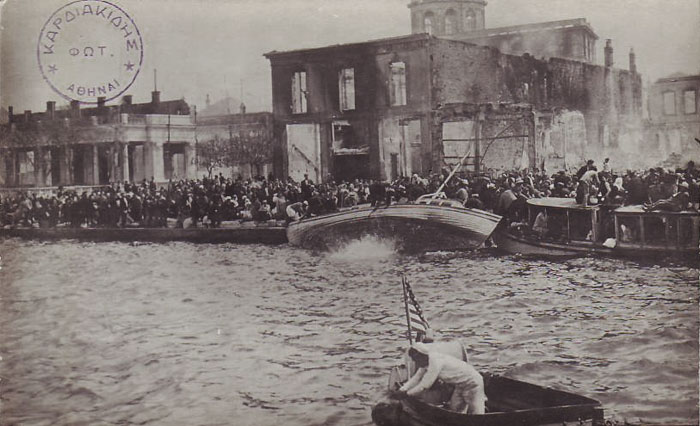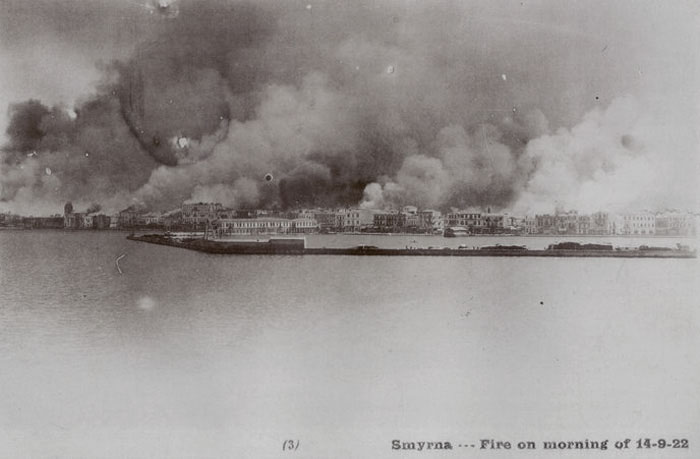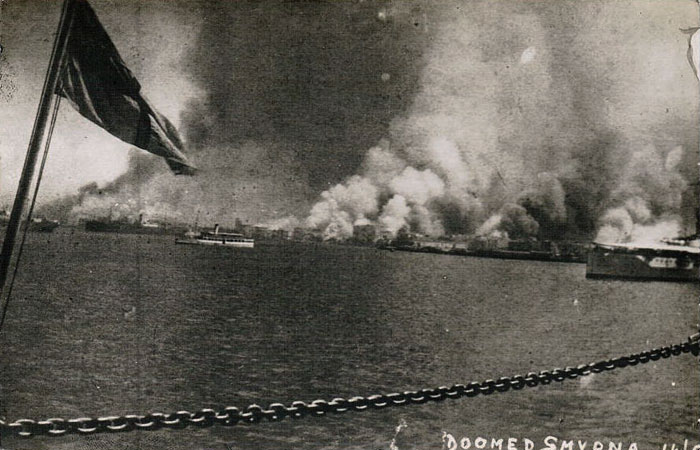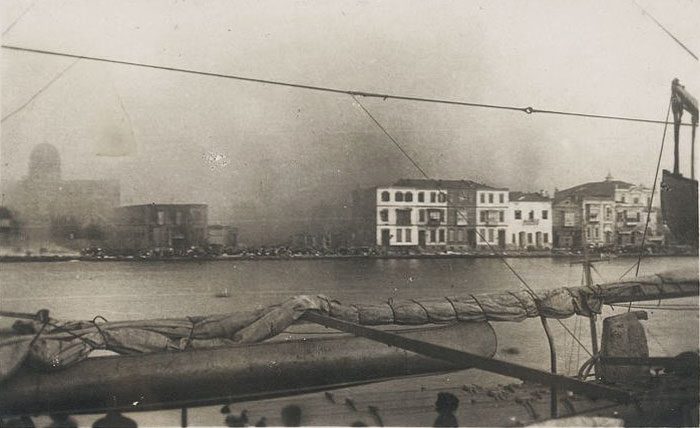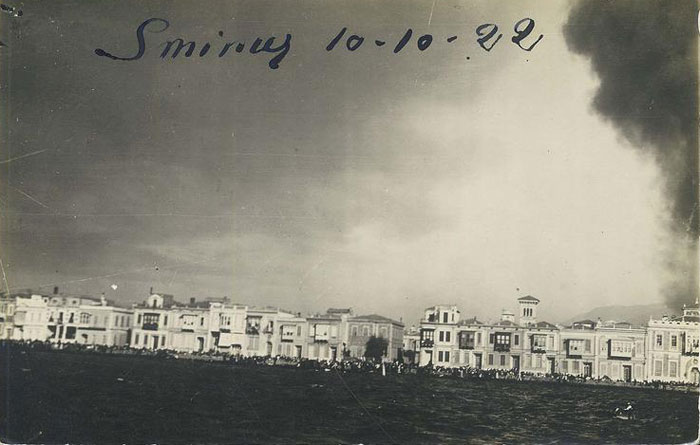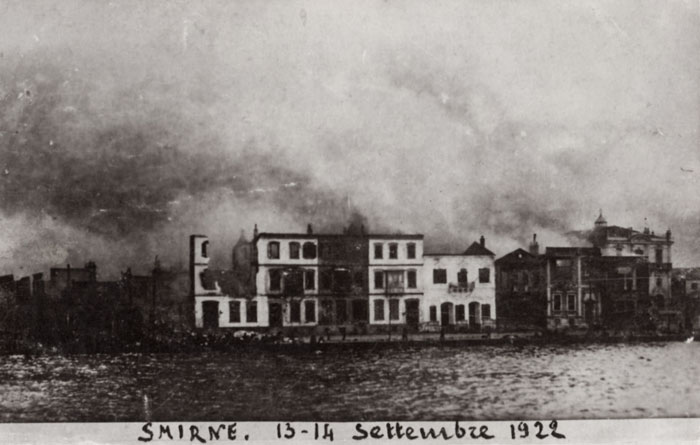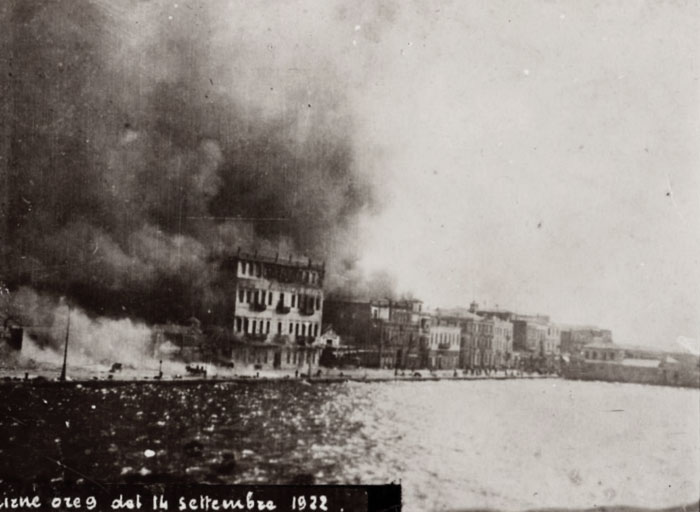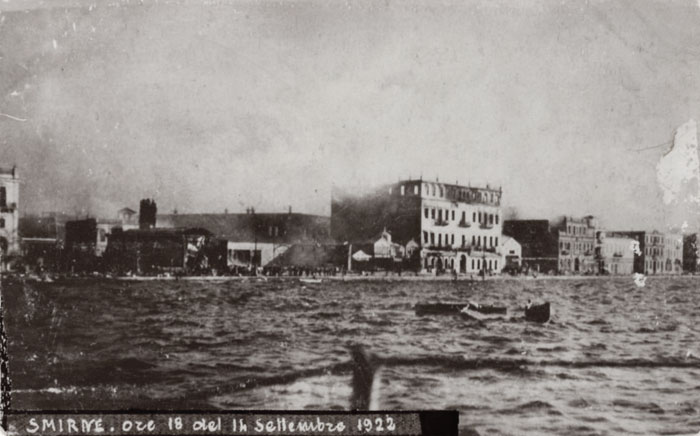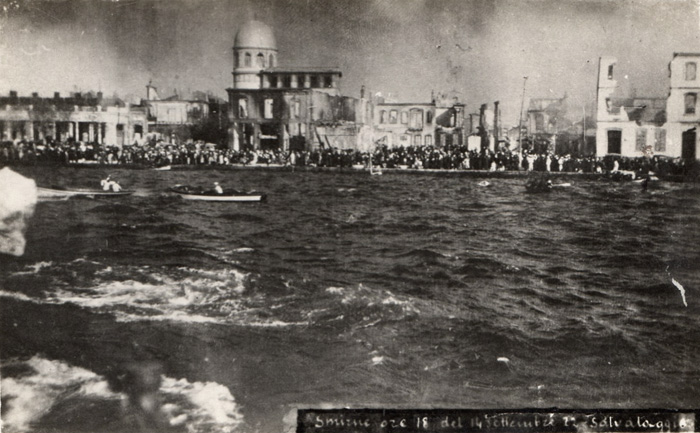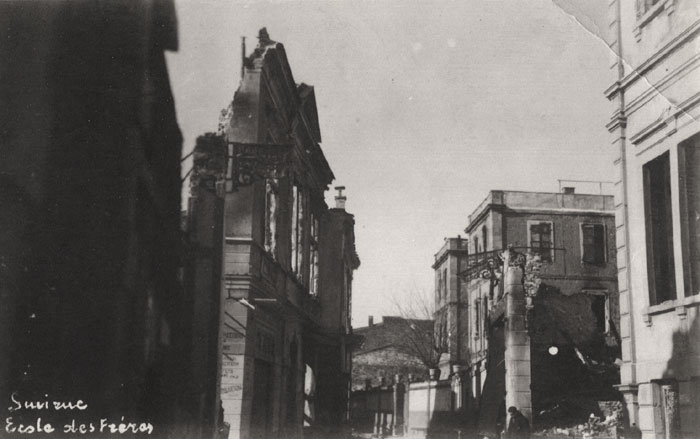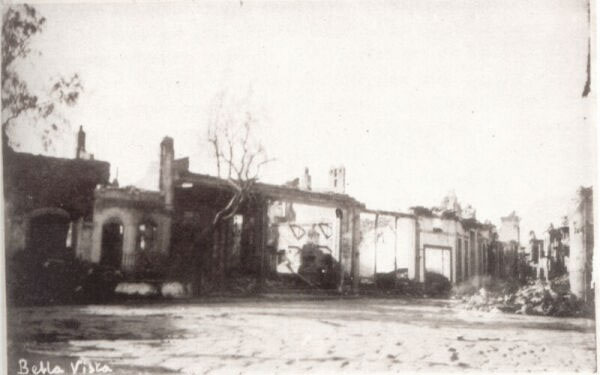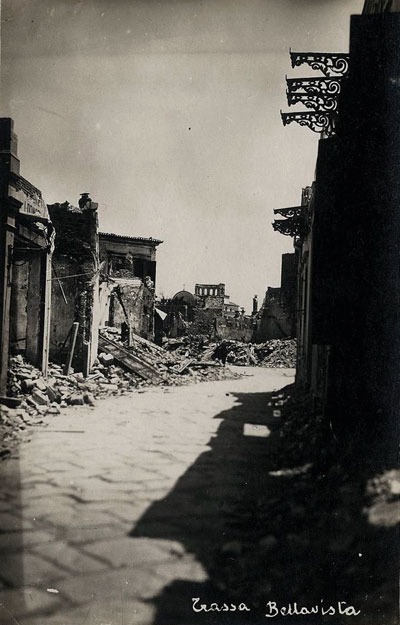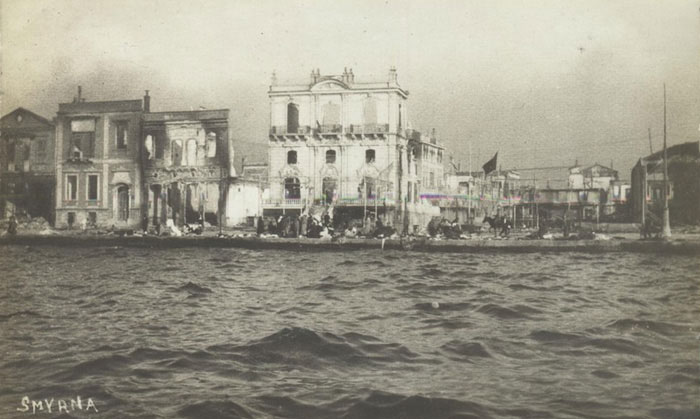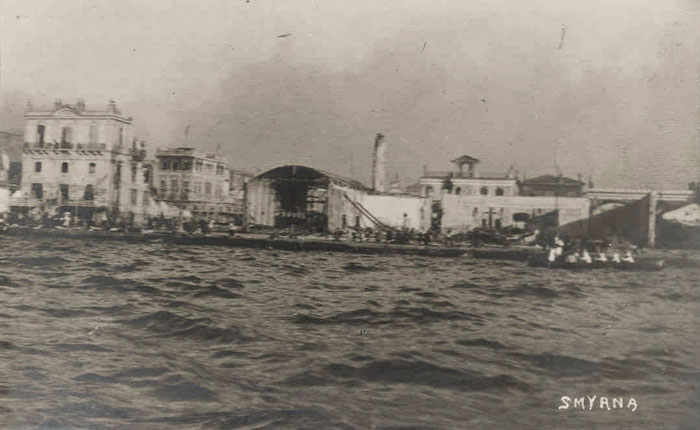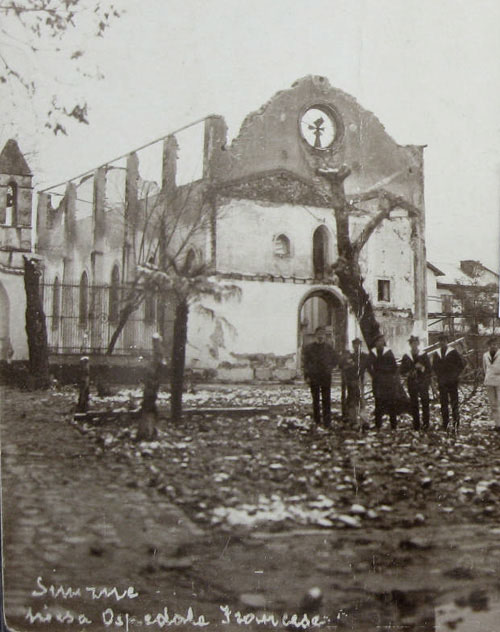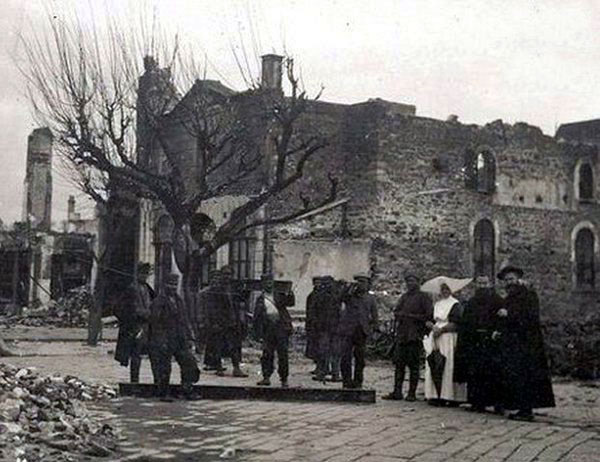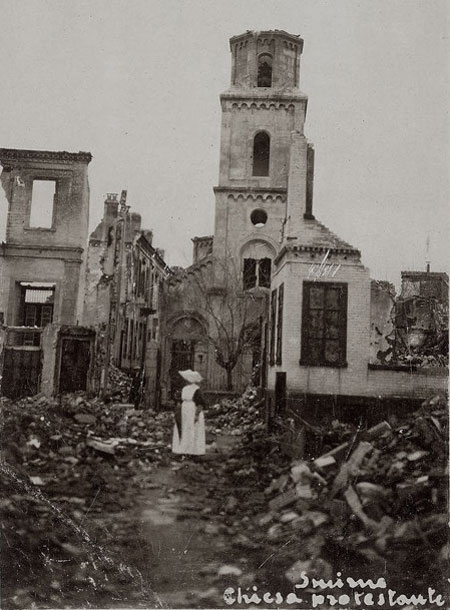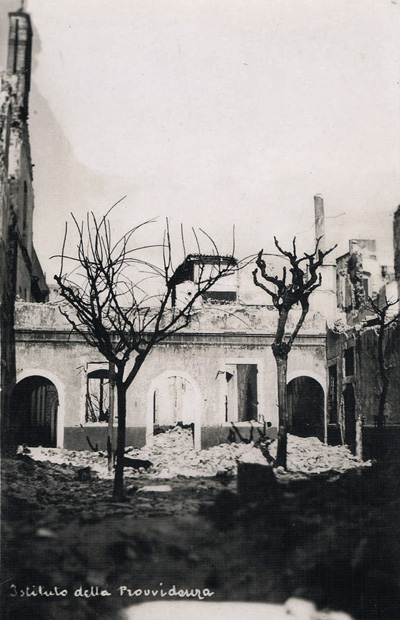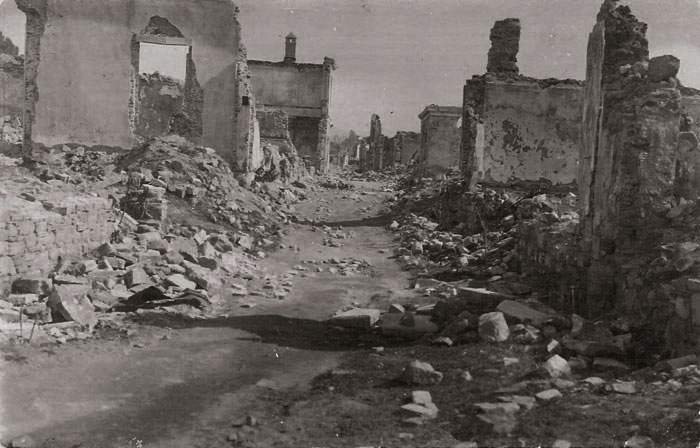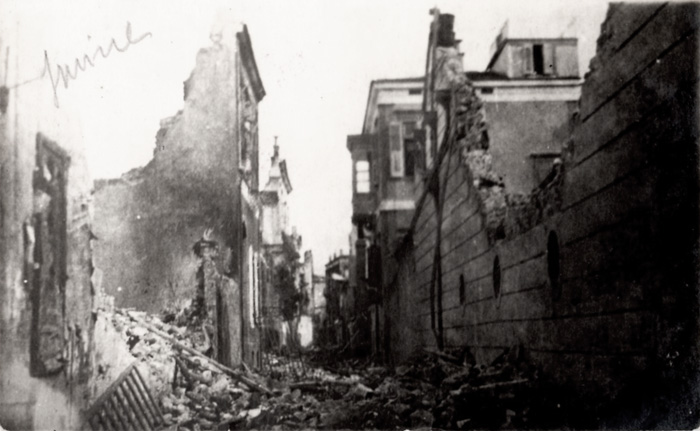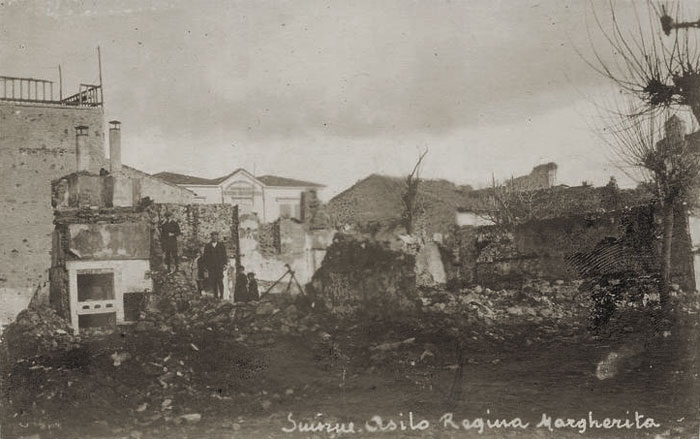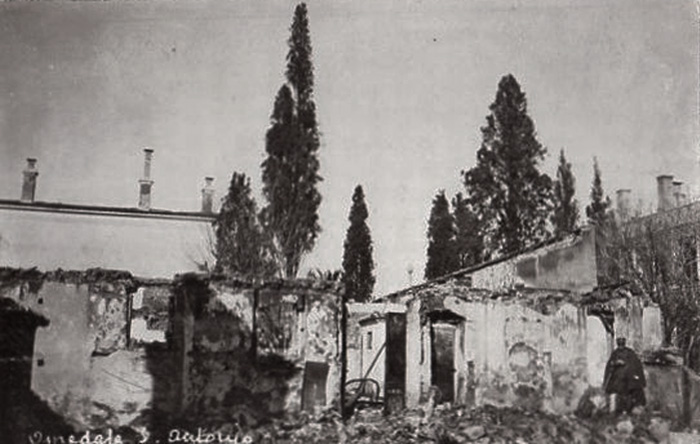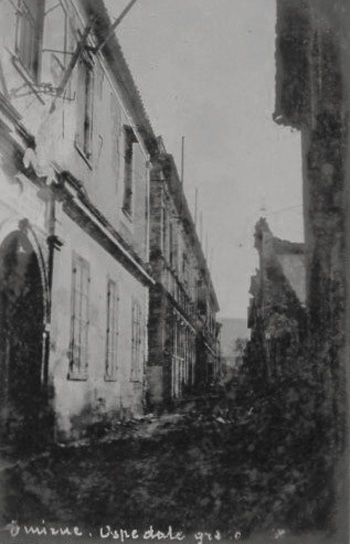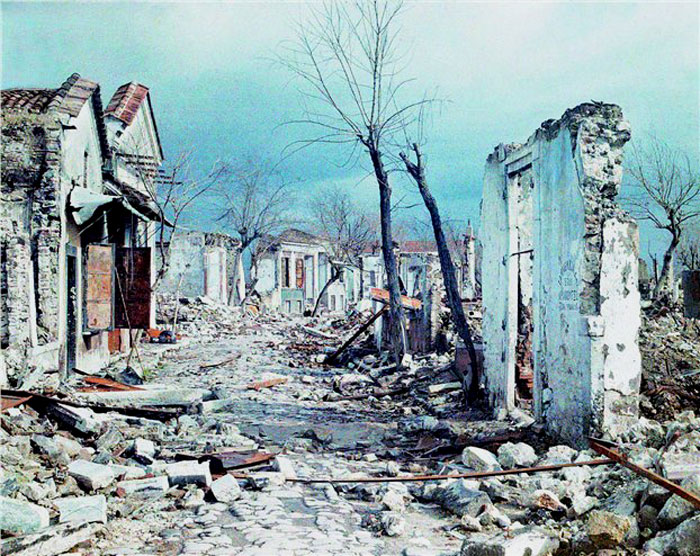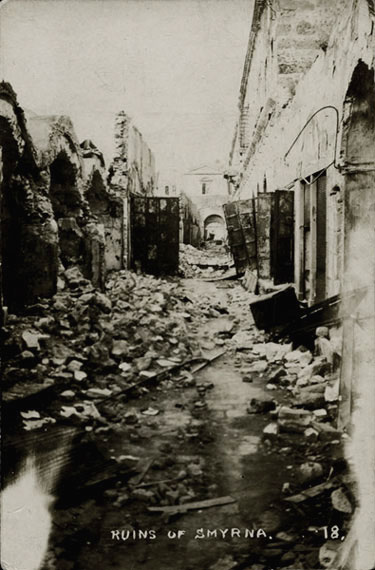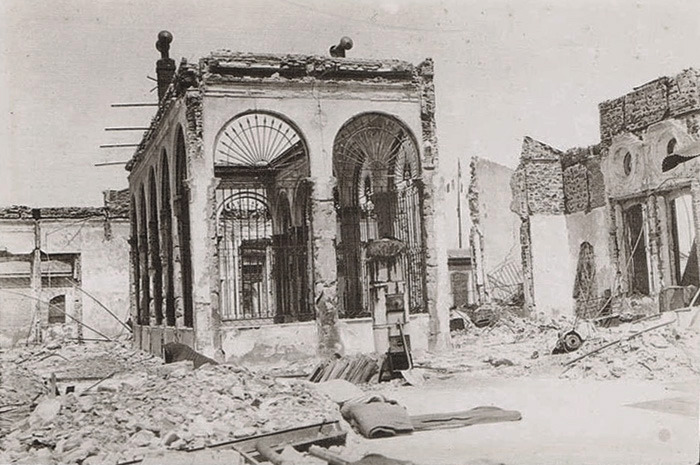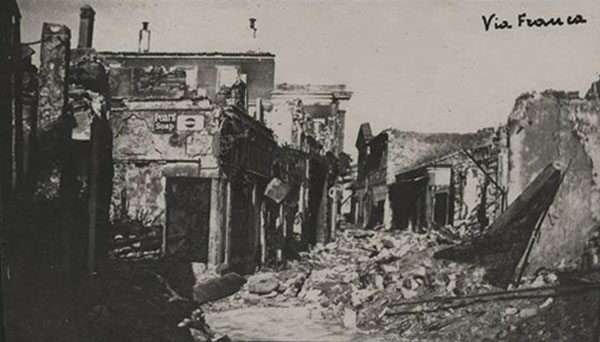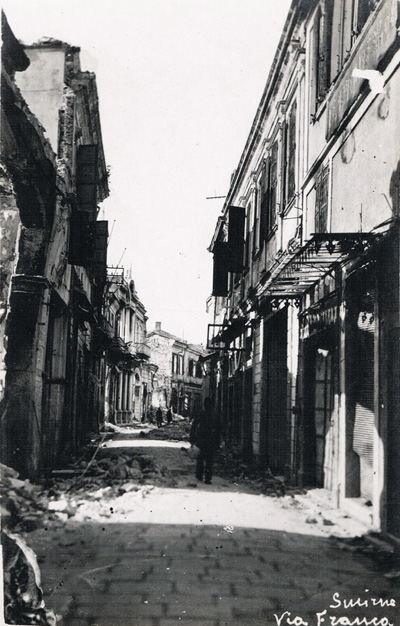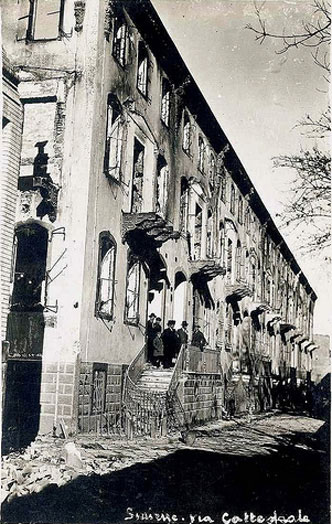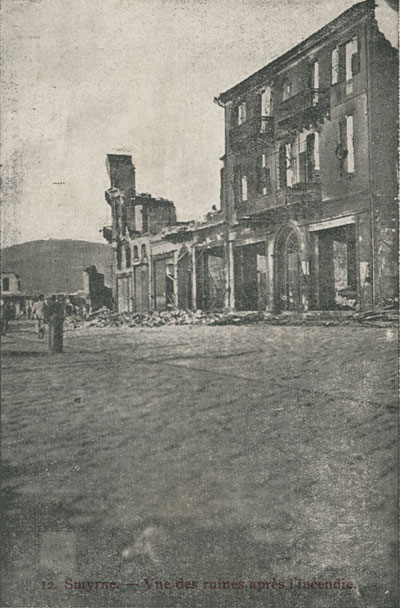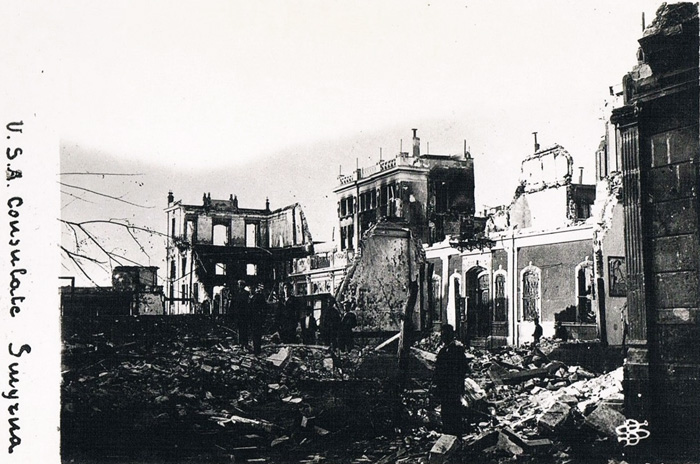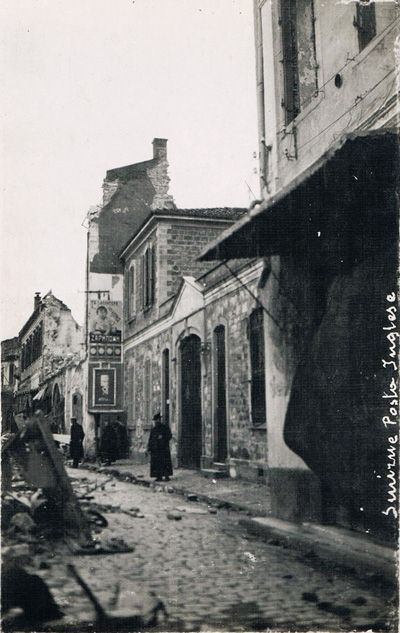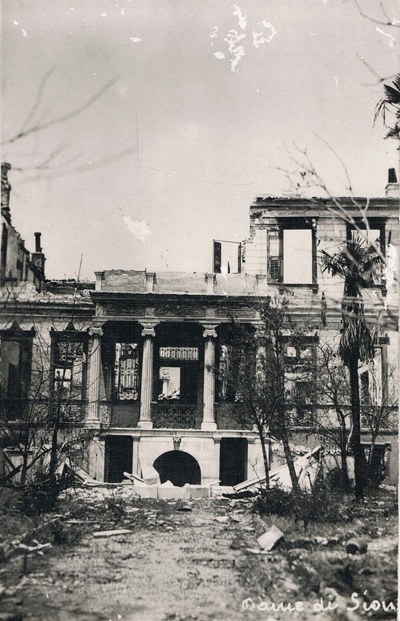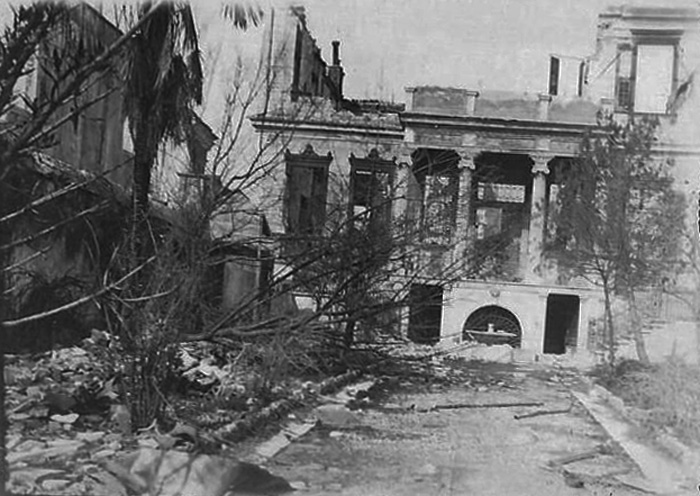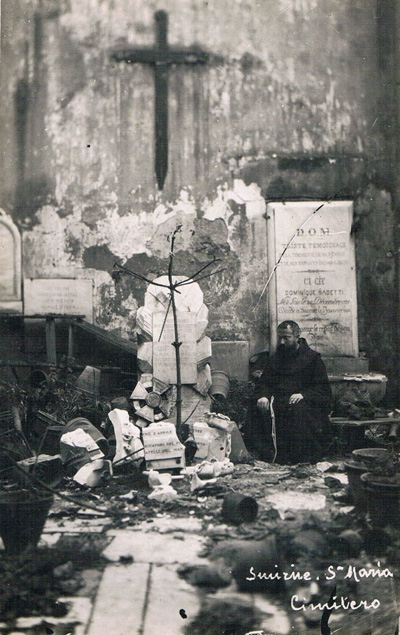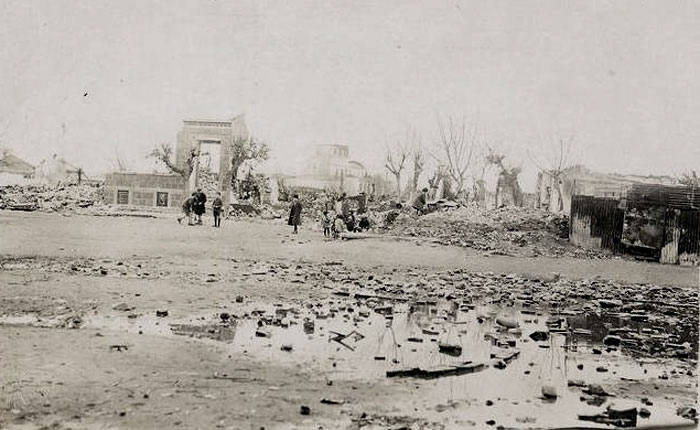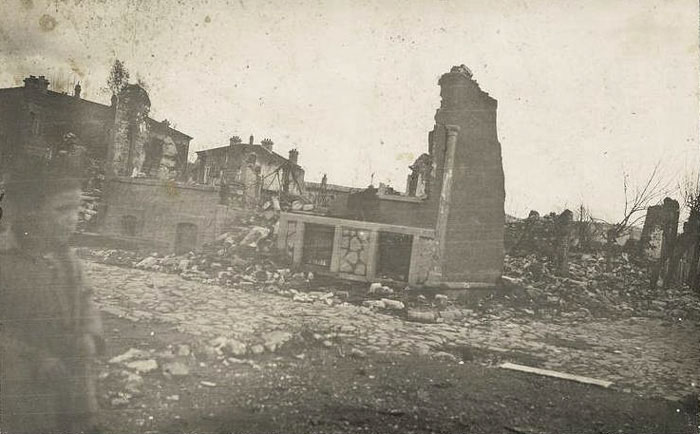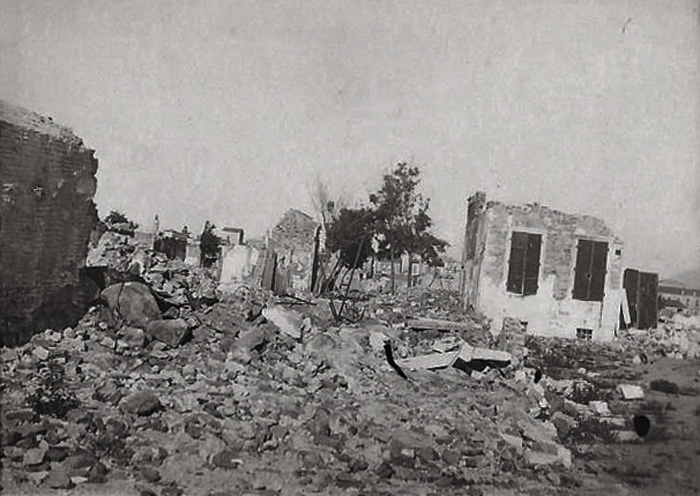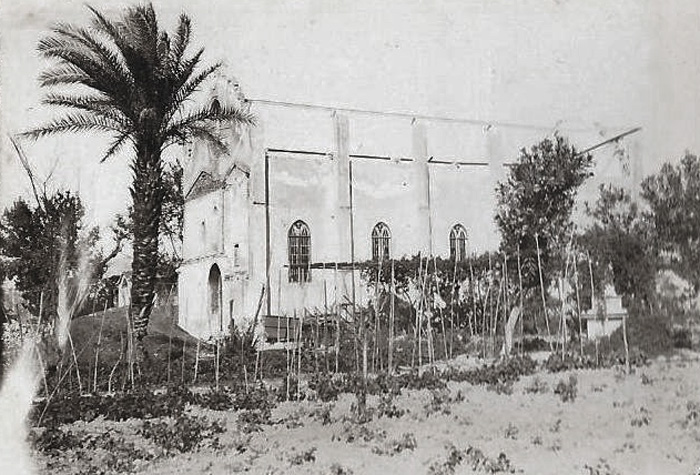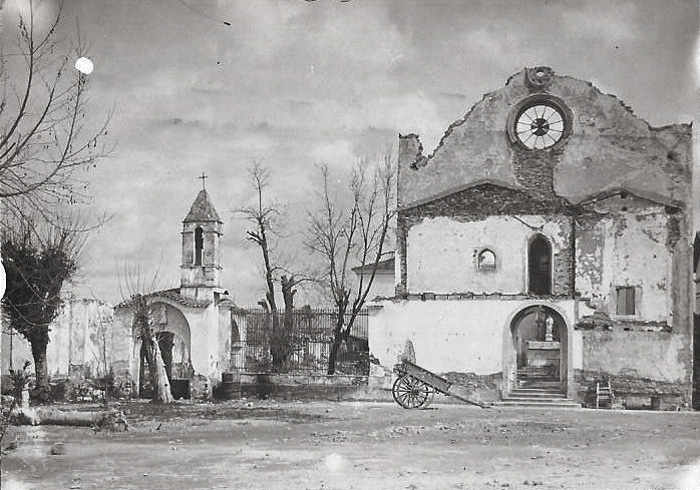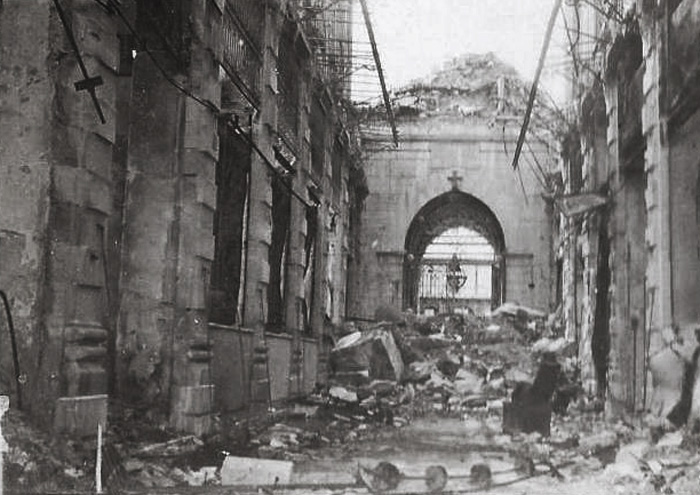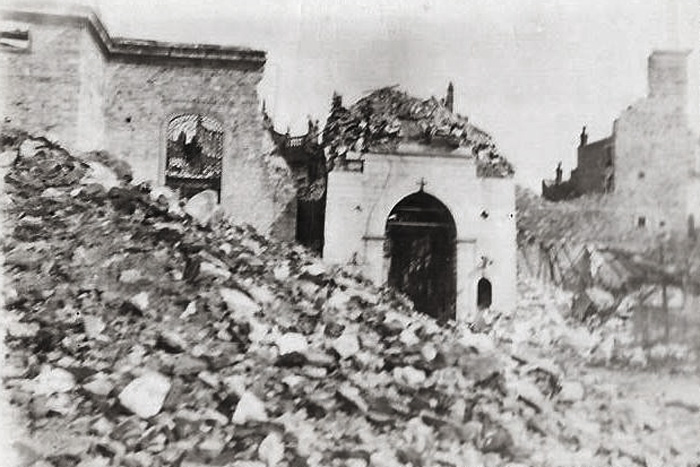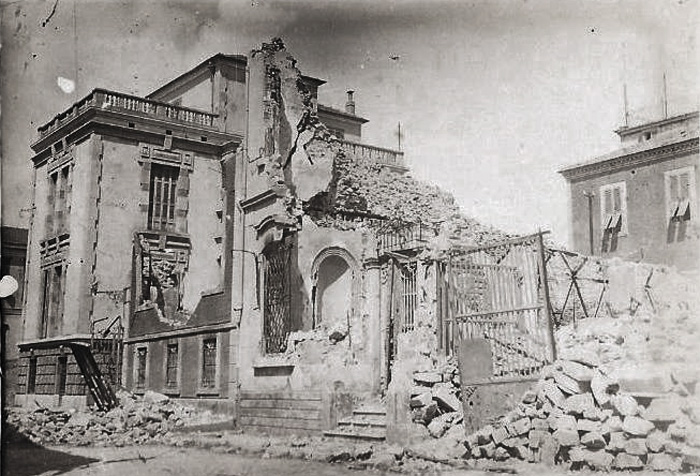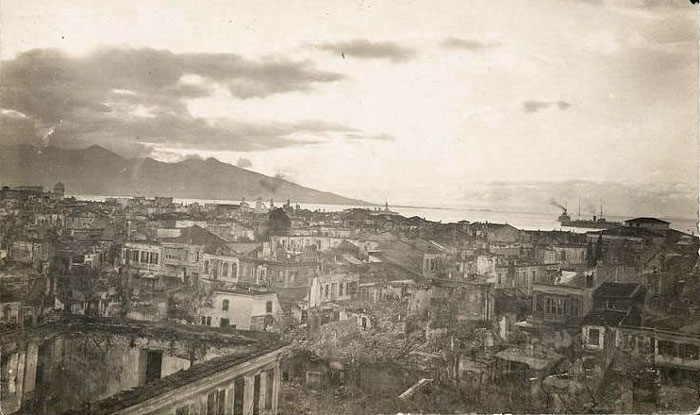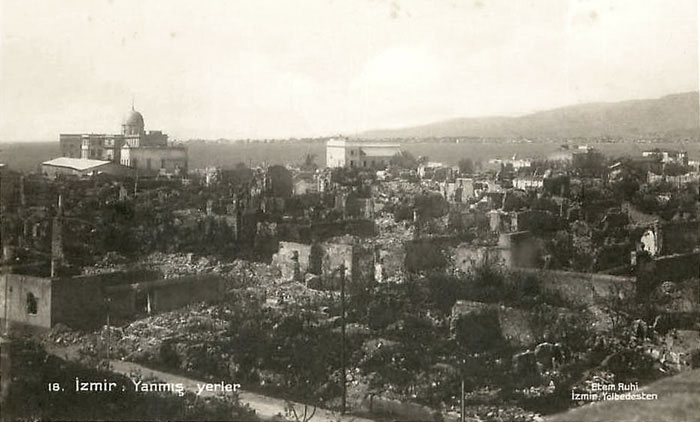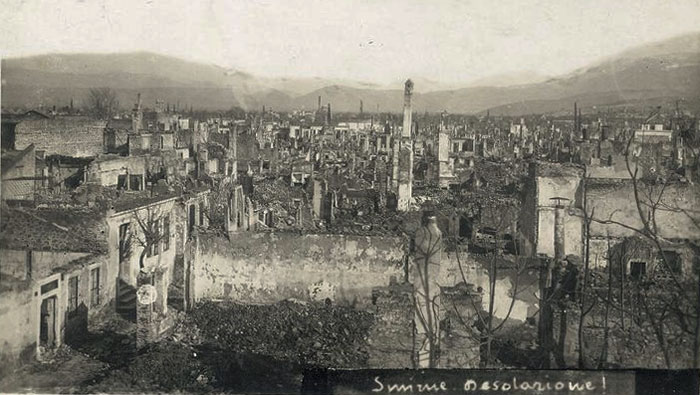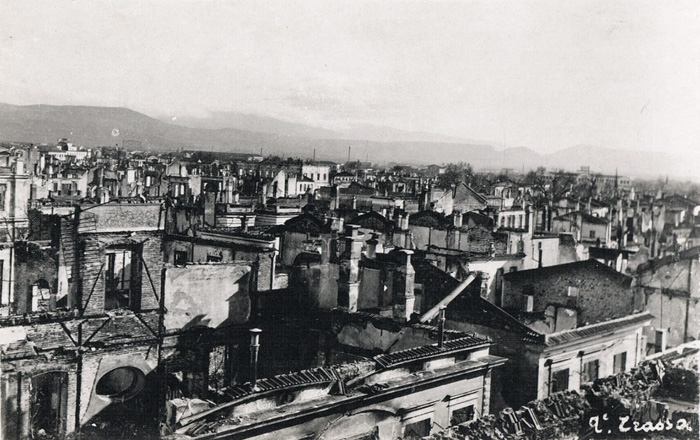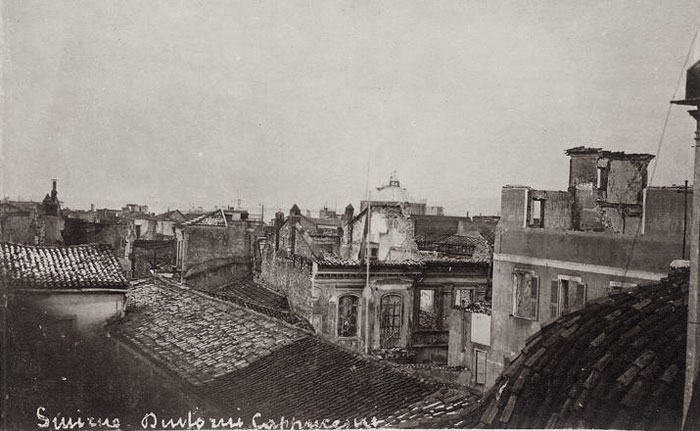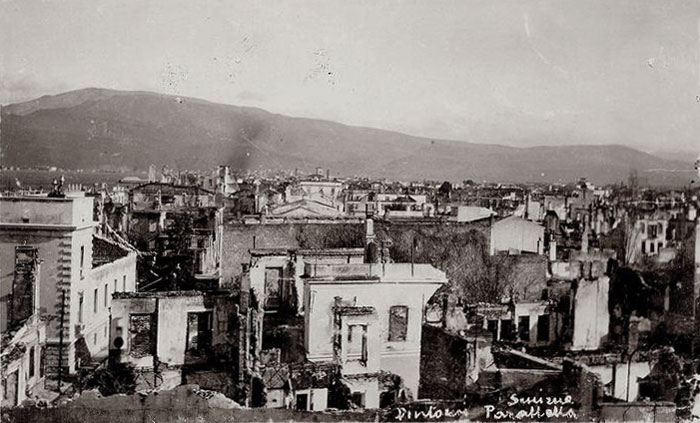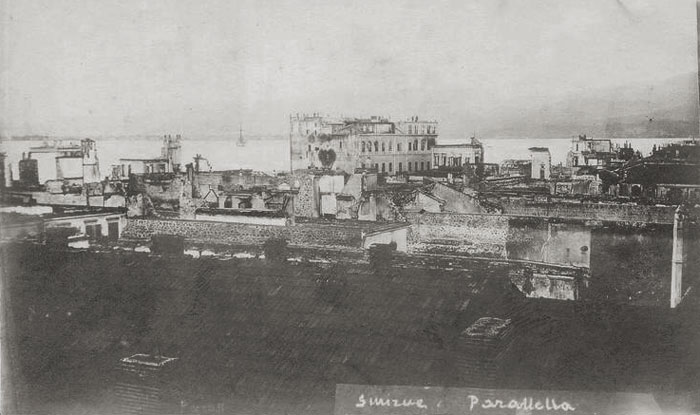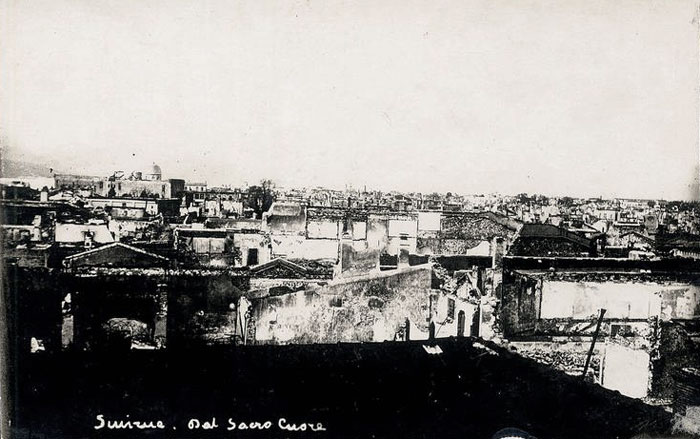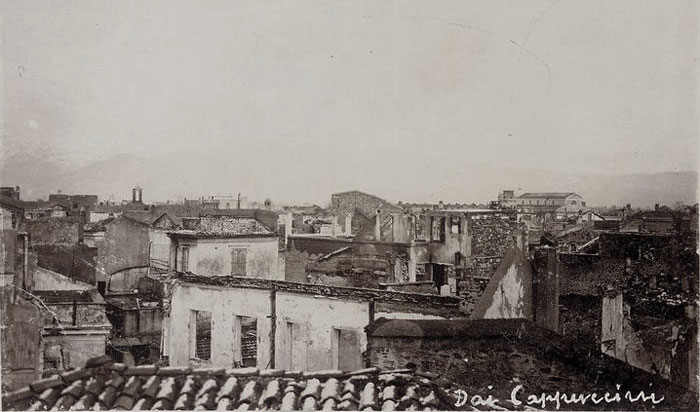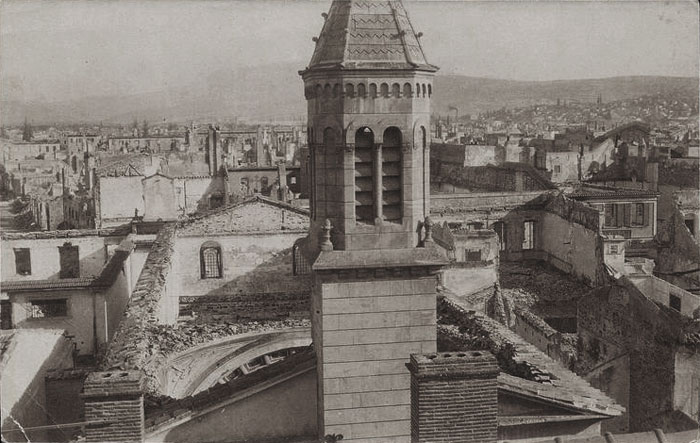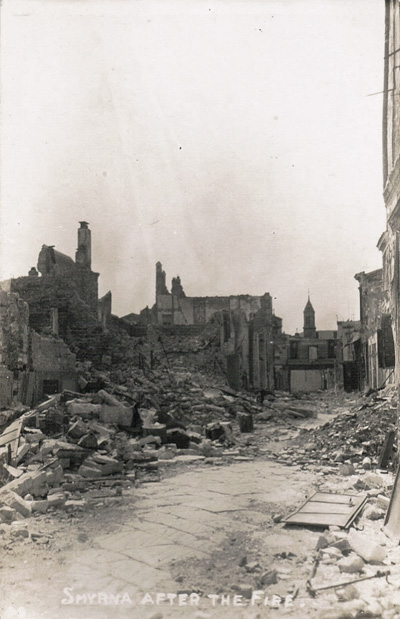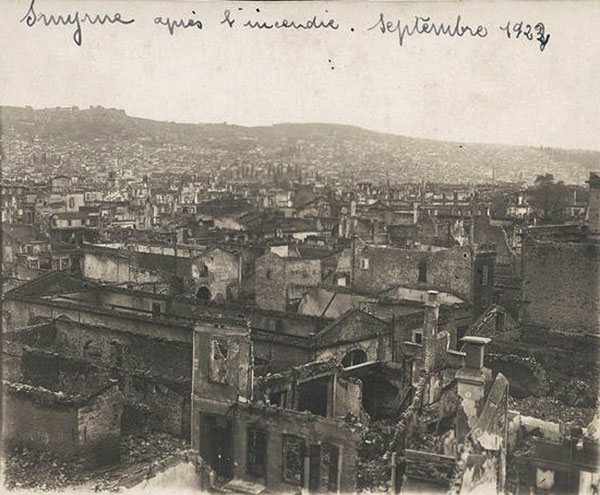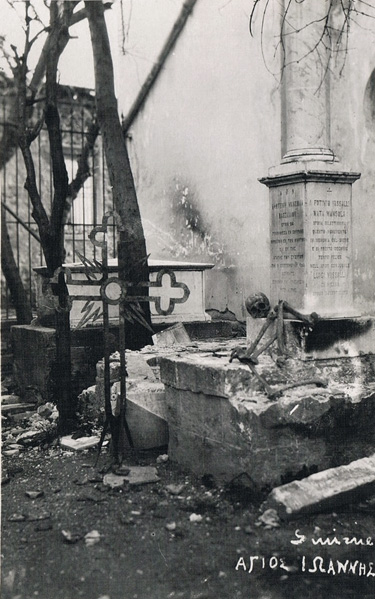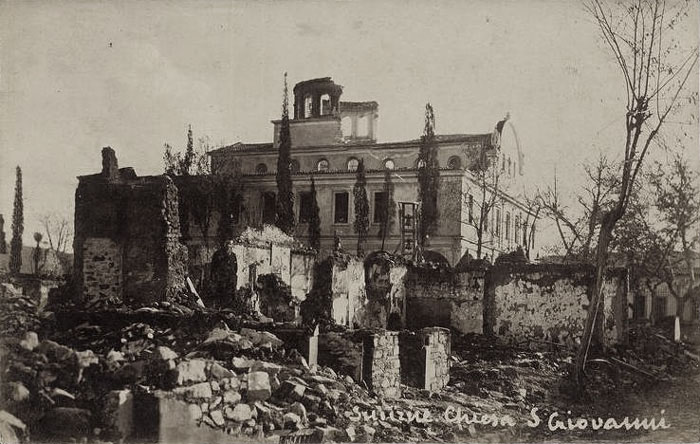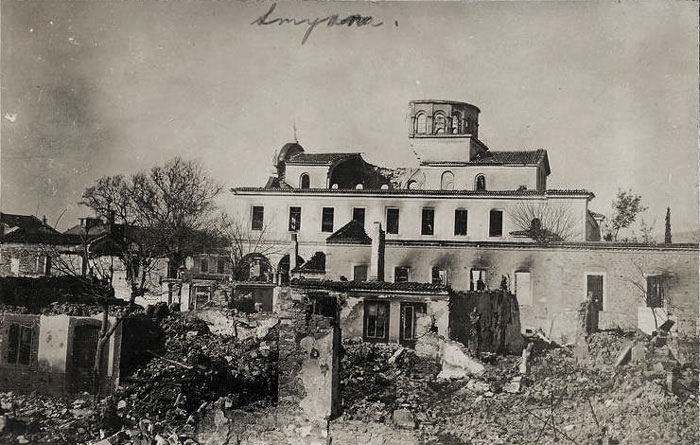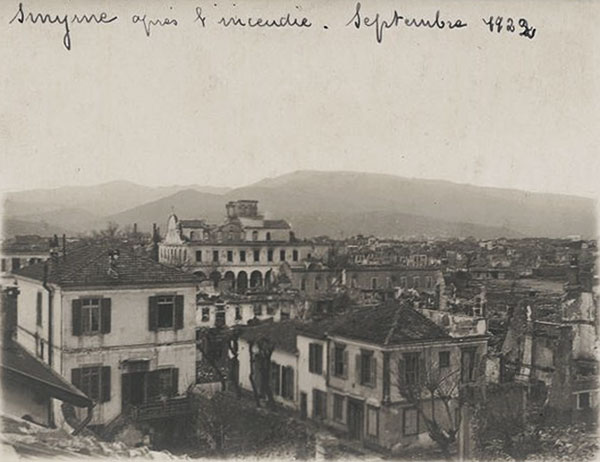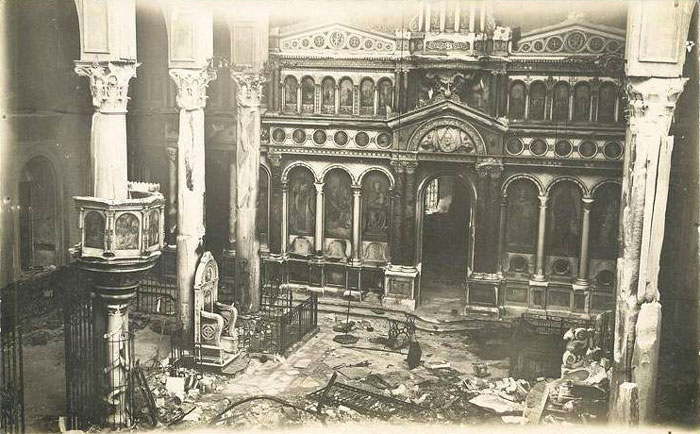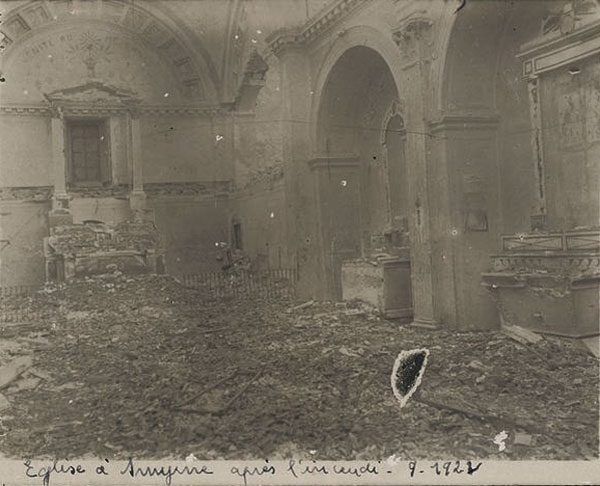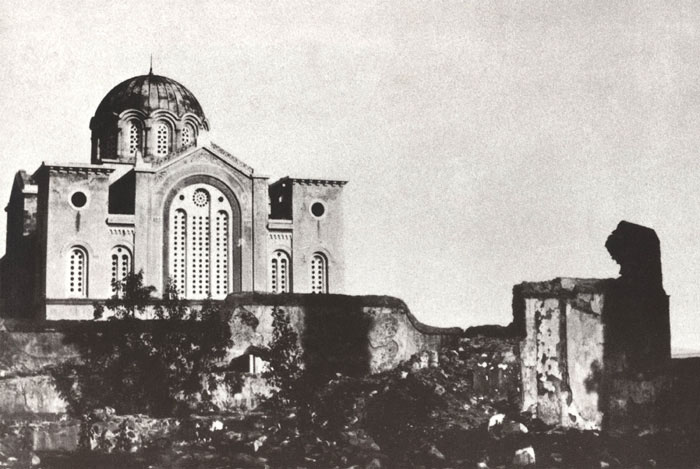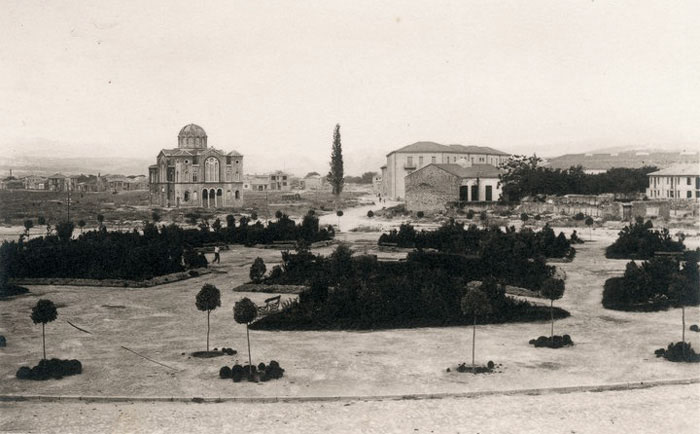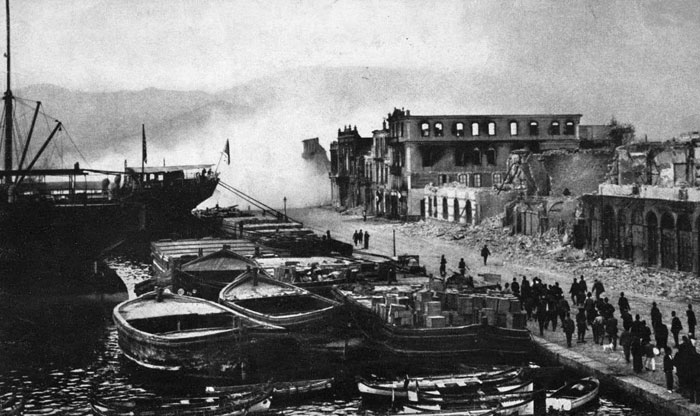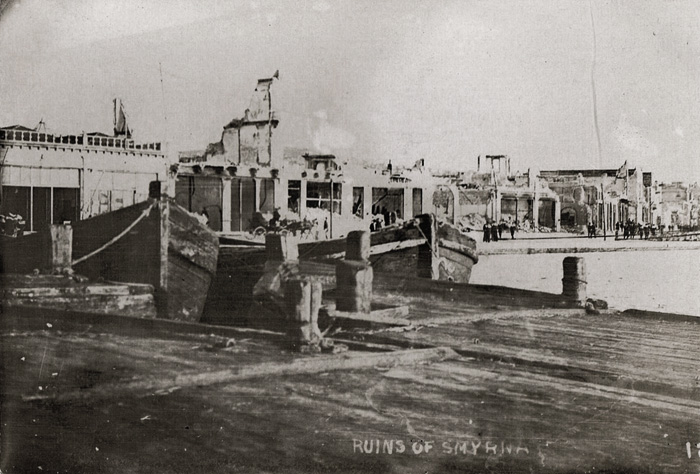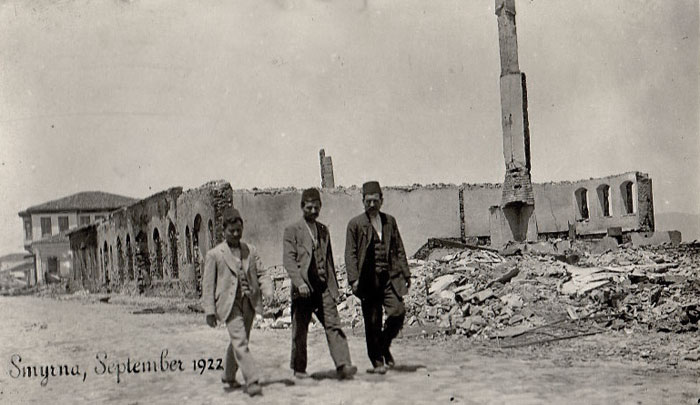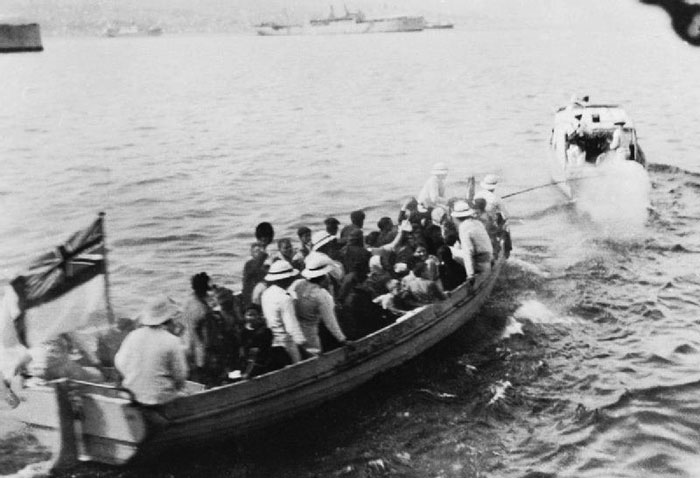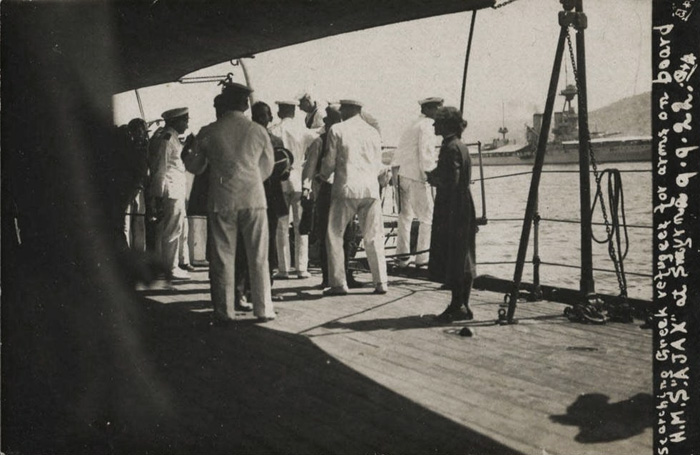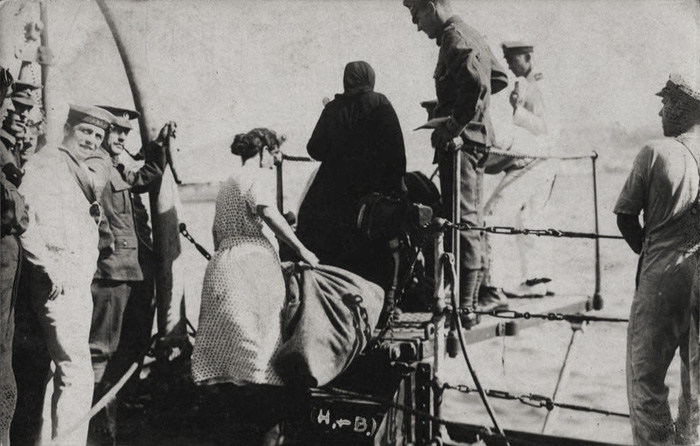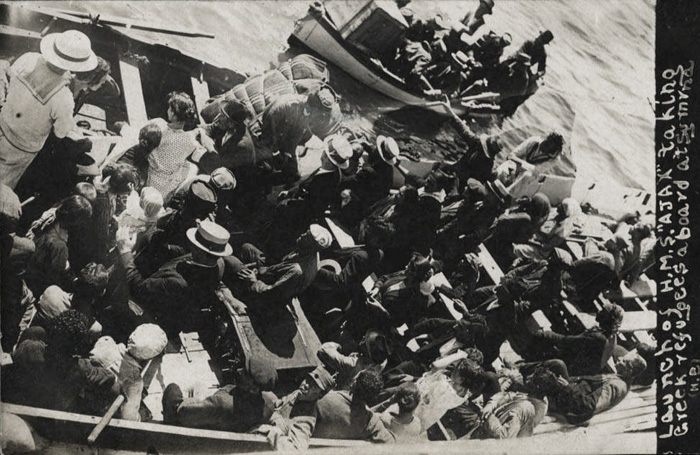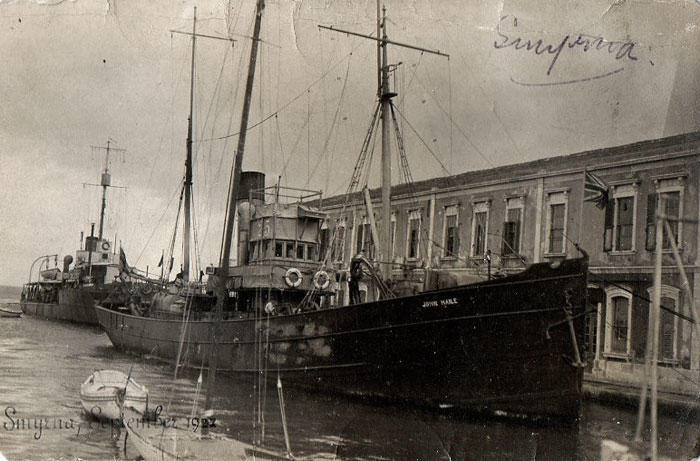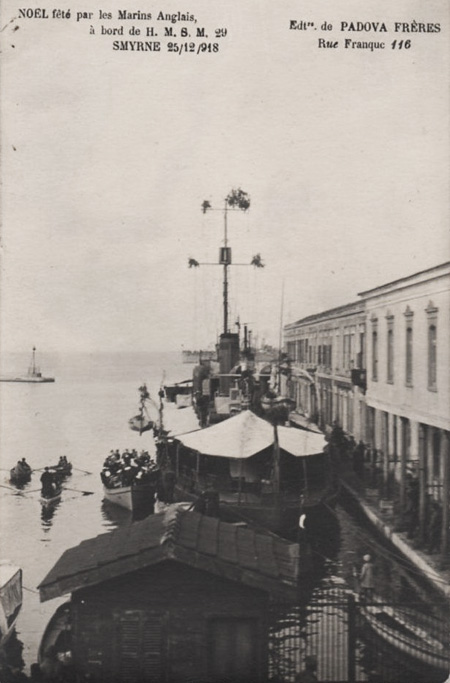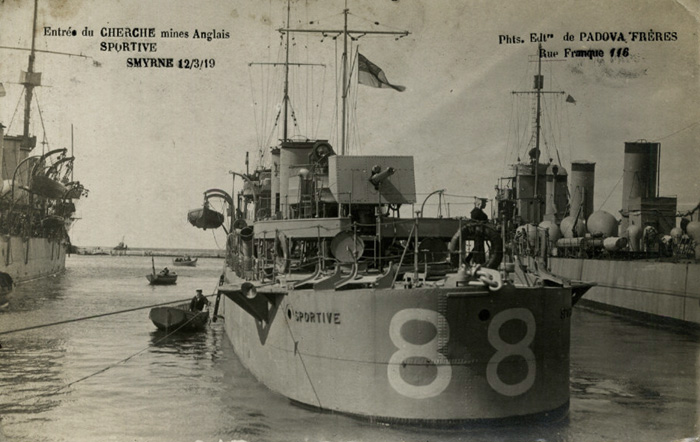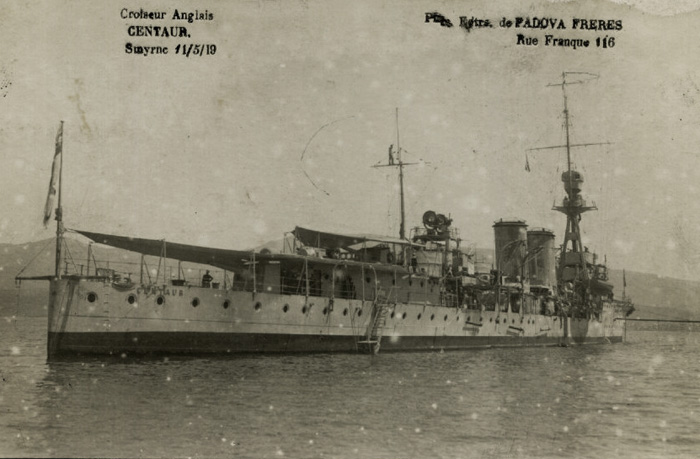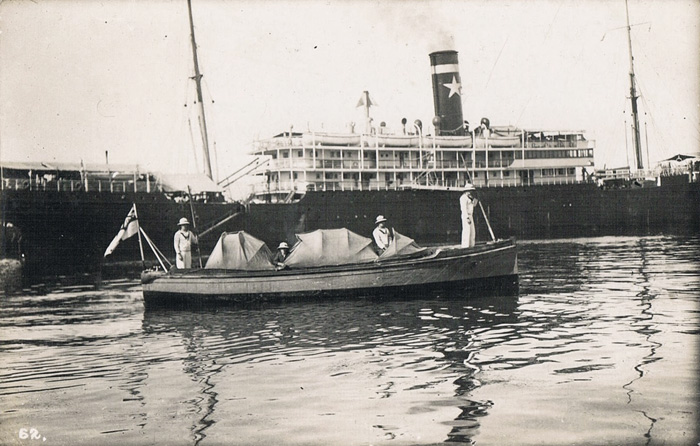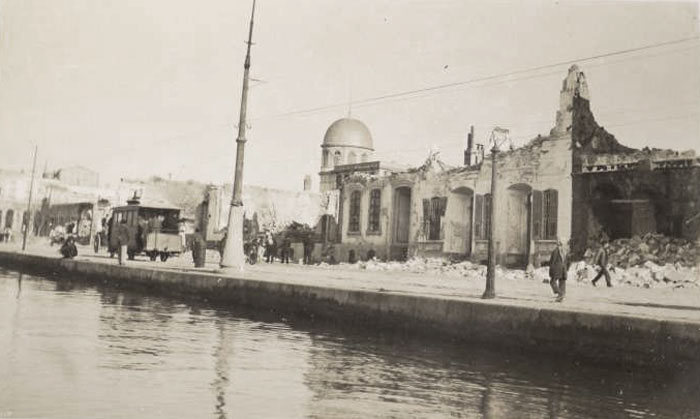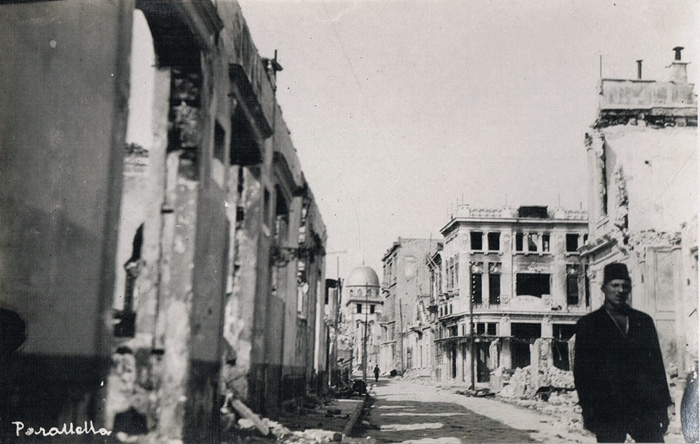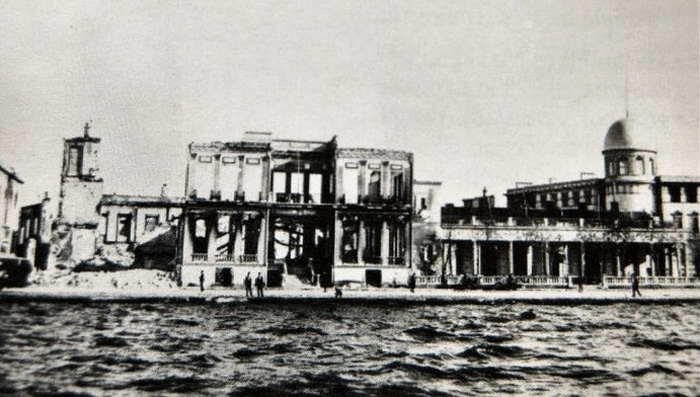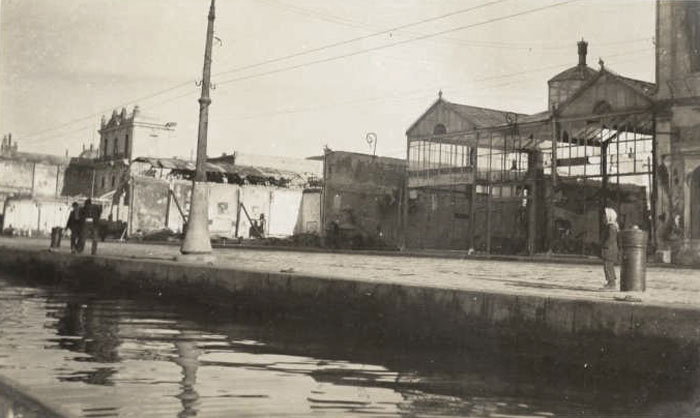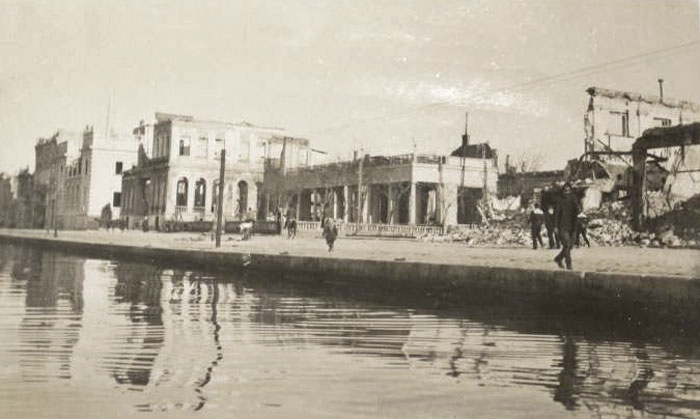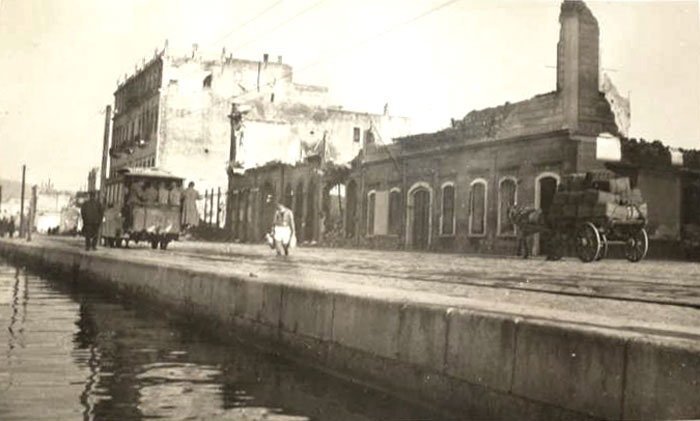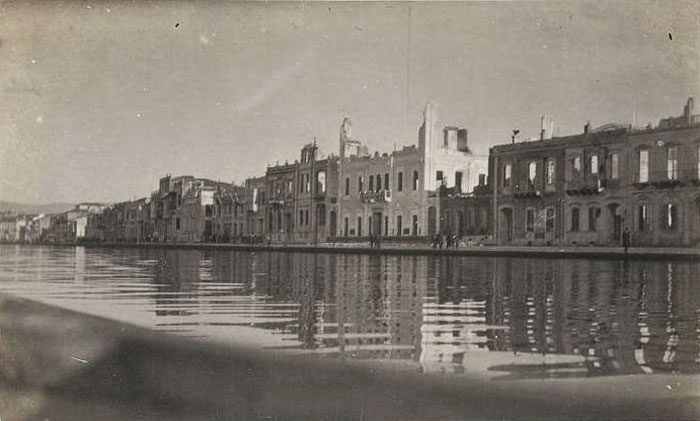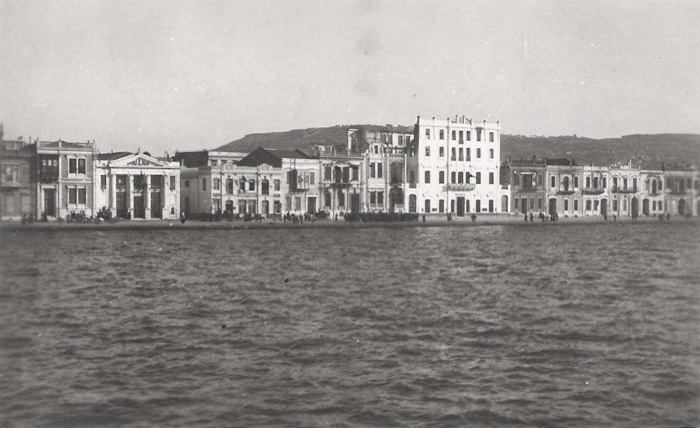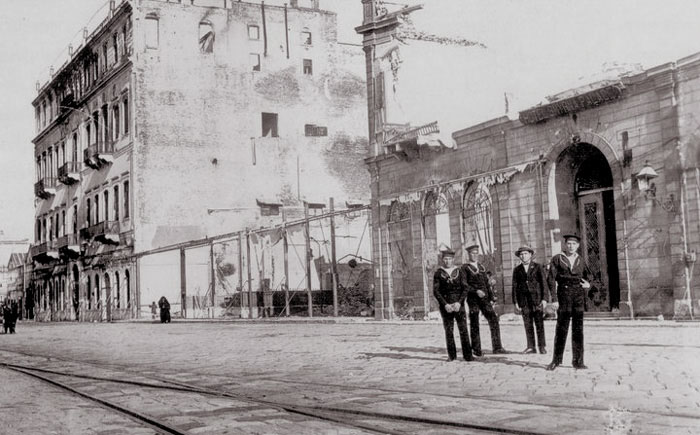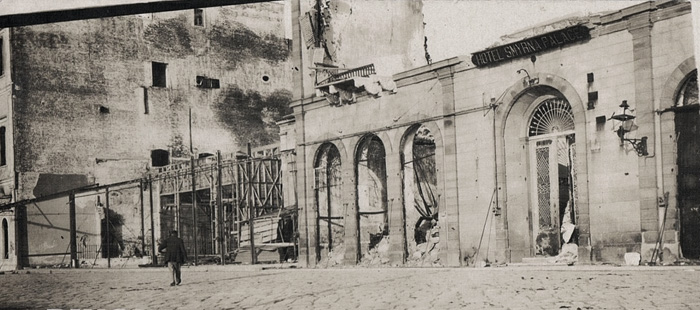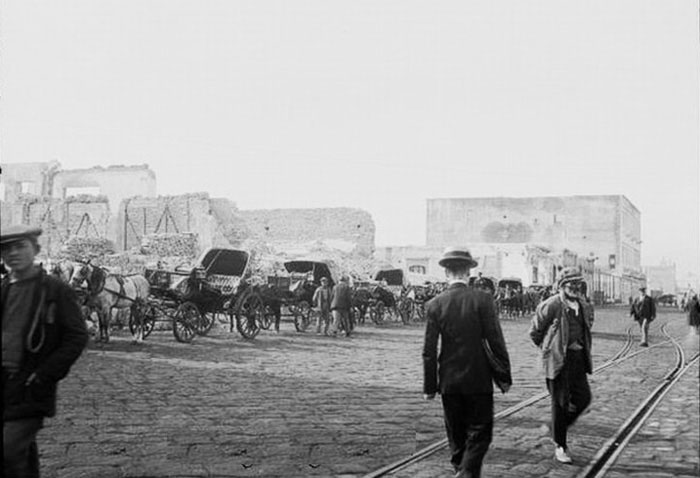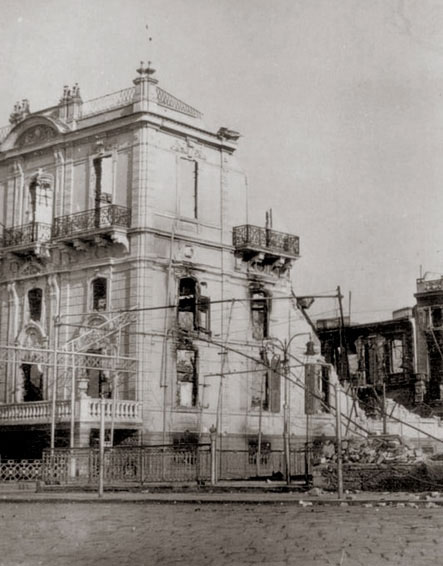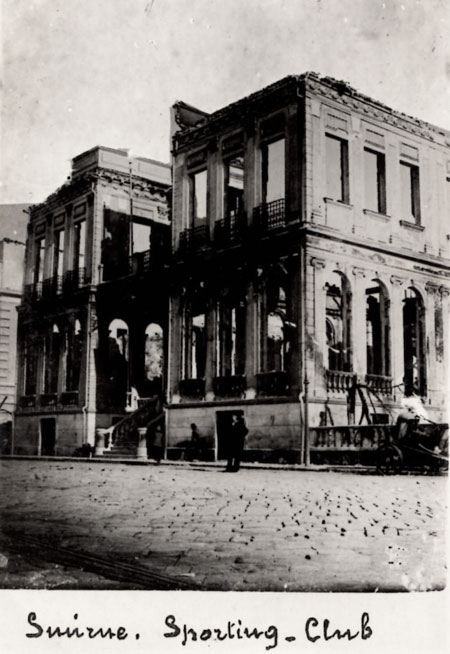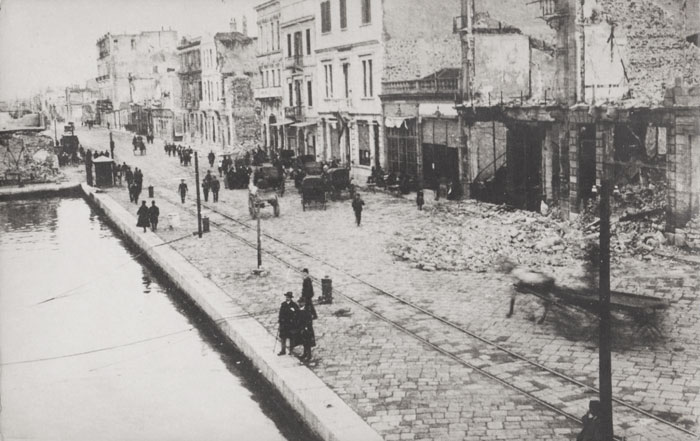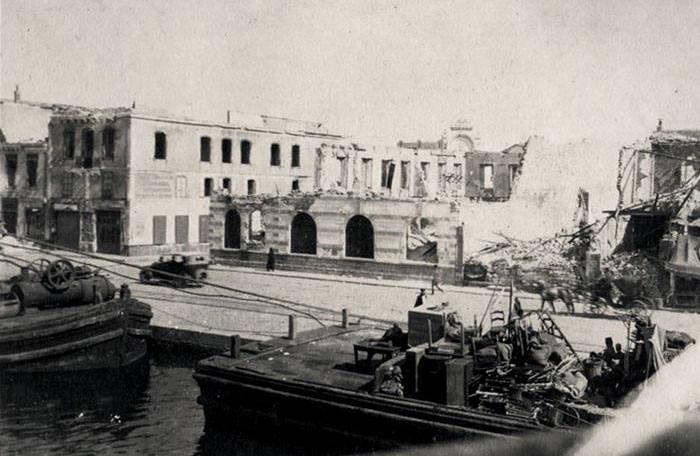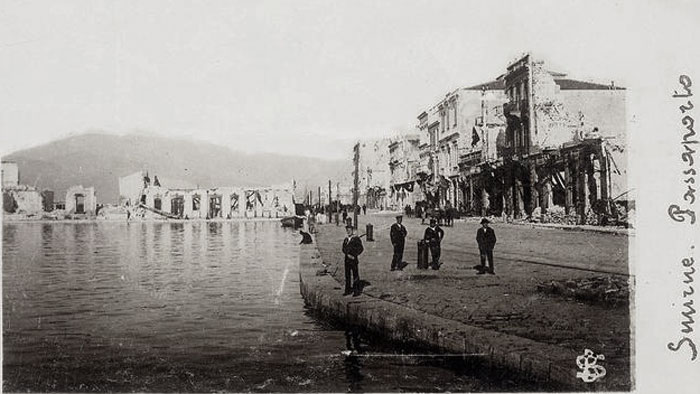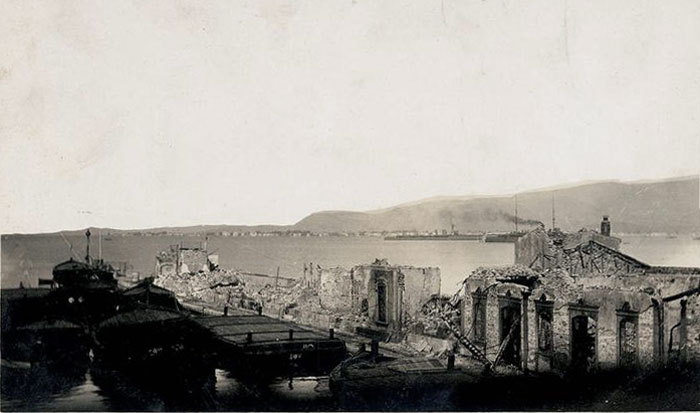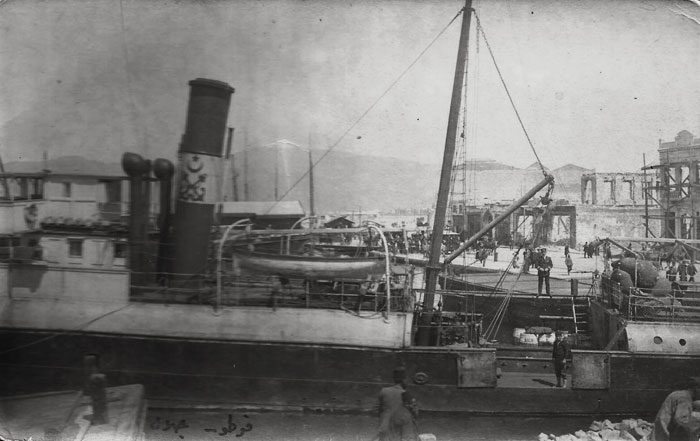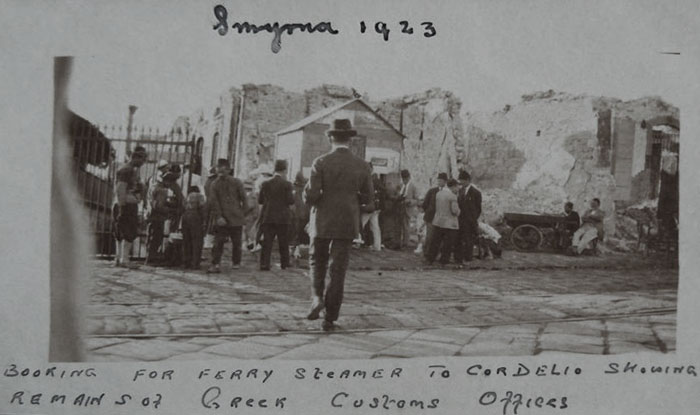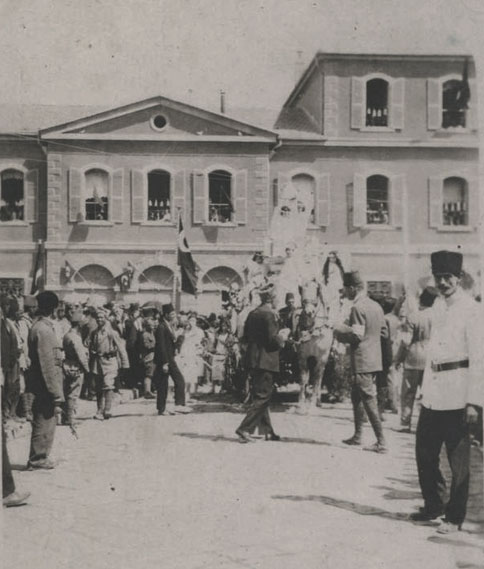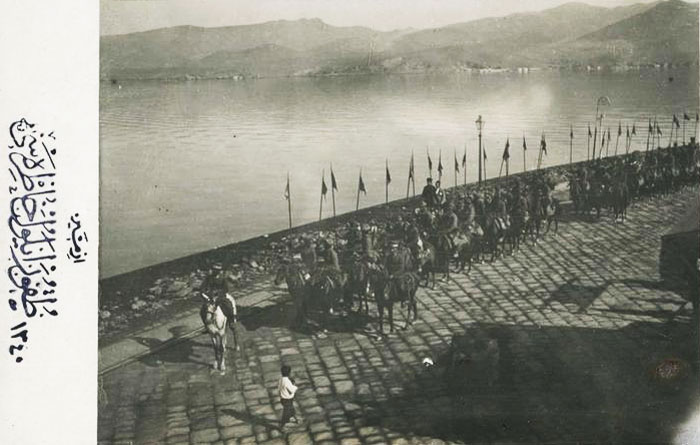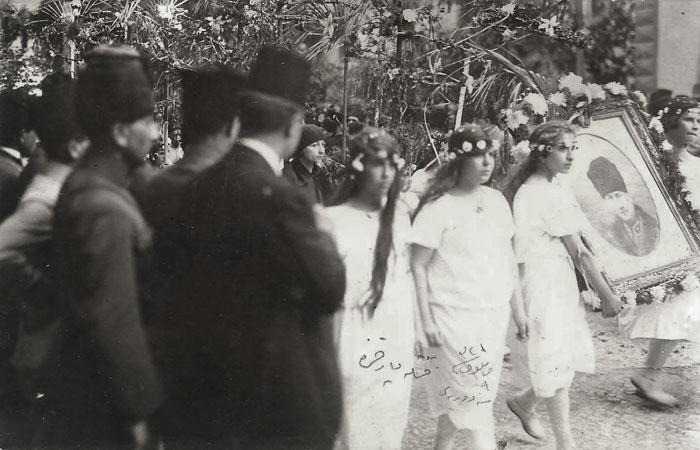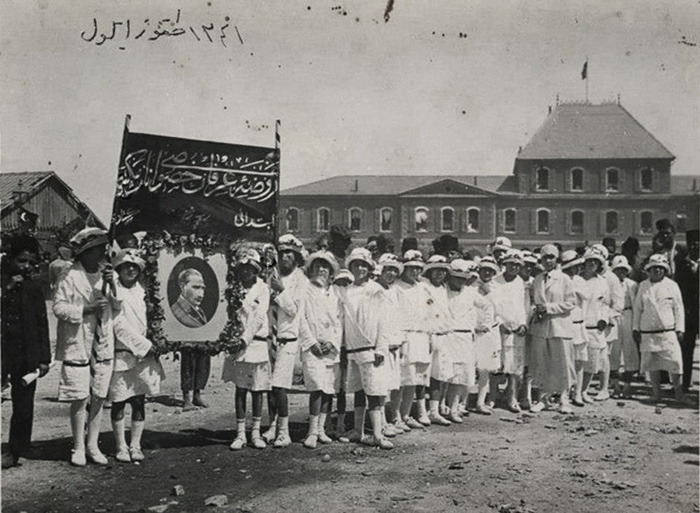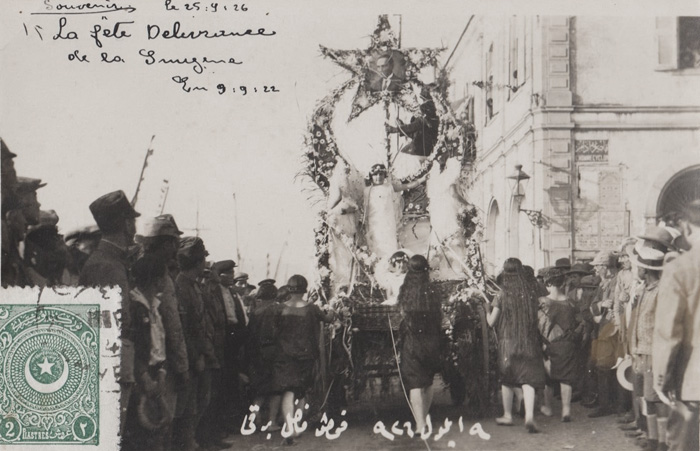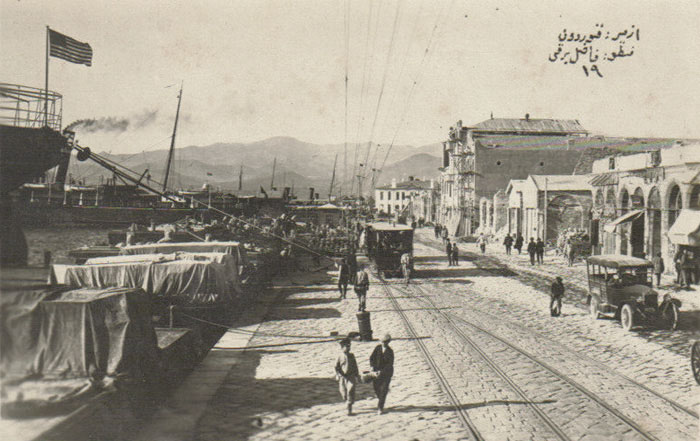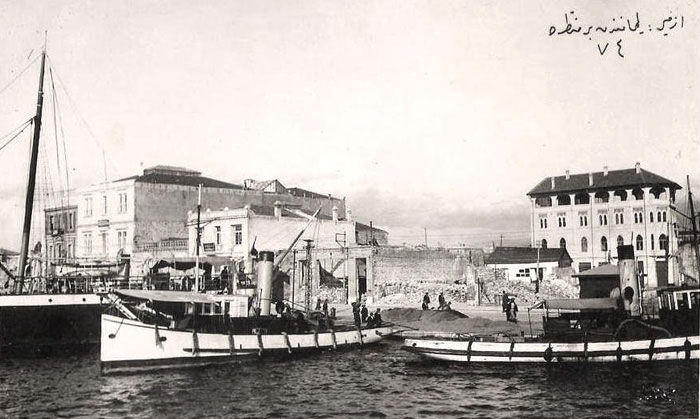|
|
|
Turkish troops entering Smyrna 9th September 1922 |
|
|
The British Consul of Smyrna (Sir Harry H. Lamb on the right?) and wife at Smyrna Quay during the Kemalist occupation, 9-9-1922. |
|
Mustafa Kemal and fellow general - Fevzi (Çakmak) promoted to the rank of marshal a week earlier, next to Mustafa Kemal - in the newly liberated Izmir. Mustafa Kemal is on the rear nearside seat, Fevzi (Çakmak, promoted to the rank of marshal a week earlier), next to him, and Kemal’s aide-de-camp Salih (Bozok) middle far-side seat. |
|
Turkish troops entering Karşıyaka. |
Views of the evacuation of Smyrna.
|
Rare photo (by S.L. Cassar) of the chaotic conditions on the quayside as civilians try to escape the city.
The shot appears to be taken before the fire, in the Konak end of the Punta seafront, an area mostly spared the effects of the fire. The refugee problem and moving such a large number in a small space of time caused the Allies a lot of consternation - The New York Times article from Oct 4 1922: |
|
|
|
|
|
|
|
|
The trajedy unfolds...
|
|
|
|
|
|
|
|
View of the fire with HMS Iron Duke in the foreground
|
|
|
|
|
|
|
|
|
|
|
|
|
|
|
|
|
|
The passangers on deck of the hospital ship Maine (carrying 407 refugees) seem to
have a last look towards Smyrna, on their way to Malta. The photographer of this is S.L. Cassar, of Maltese origin, operating from Malta around 1916 and who was established in Smyrna in 1890. |
|
|
The aftermath of the fire on ‘Ecole des Freres’, the old St Joseph School, which still functions today but in a different location. The old school was on Rue des Roses and the street was in the area where Swiss Hotel grounds now stand. Today’s school is housed in the former ‘Saint-André apprentice school’ branch building (1462 sokak, Alsancak). |
|
Fire damage in the Bella vista neighbourhood of Smyrna, today equating to the ‘Gündoğdu Meydanı’. |
|
In the distance a view of the Orthodox Church of Agios Ioannis Kerasochoras in Schinadika ( closer views), taken from south-west, with its dome semi-collapsed. |
|
|
|
Click here for post-fire views of the interior of the Chapel of the French Hospital. |
|
The lady with white bonnet is certainly from Soeurs de la Charité and de Saint Vincent. She could be investigating the remnanats of Sacré Coeur school (currently Ticaret Lisesi). Thus, the freres catholiques may be Capuchin monks from St. Polycarpe Church. |
|
|
|
|
|
|
|
|
|
|
|
|
|
|
|
|
|
|
|
|
|
|
|
|
|
The former British Post-Office. |
|
|
|
|
post-fire views of the French College Dame de Sion. |
|
|
|
|
|
|
The French Hospital after the fire. |
|
The French Hospital & chapel after the fire. |
|
The remains of the Agia Fotini bell tower after the fire. |
|
The remains of this same bell tower from the main street-side after the fire. |
|
|
|
Possibly taken from the rooftop of St.John’s Cathedral, with the Izmir Italian (La Centrale) School. |
|
|
|
|
|
|
|
|
Further images of the Sacre Coeur Chapel. |
|
|
|
|
|
The fire damaged Agios Ioannis Keraschoras Orthodox church from both sides. |
|
|
The interior is of the Church of Agios Ioannes Prodromos sten Kerasochori, on the southern edge of Punta, just after the 1922 fire. |
|
|
The Evangelistria (Annunciation of Virgin Mary) the Orthodox church that seems to have stood pretty untouched in the fire, probably protected by what appear to be its high walls. |
|
The same church isolated in the southern end of the fire zone apparently a few years later. |
|
|
|
|
A Royal Navy launch towing a cutter full of Greek refugees to an awaiting ship in Smyrna harbour during the post-fire evacuation. |
|
|
|
|
|
A British mine-sweper at the Pasaport harbour, Smyrna, Sept. 1922. |
|
|
|
|
The aftermath. The wording on photo: ‘The burnt places of Izmir Kordon - Photo Cemaleddin’. The building on the right with the dome is The Izmir Italian ( La Centrale) School, one of the few to survive in the region relatively intact. Demolished in the 1940s near present day Republic Square (between present day 9th Sept. University rector’s office and the French Cultural Institute), to allow the widening of the ‘Second Kordon’ road there. The ruins of the building in front are those of ‘Cafe de Paris’ and the one with the flag to the left, the ‘Sporting Club’ - translation and information courtesy of Melisa Urgandokur. |
|
|
|
|
|
|
|
|
|
|
|
|
|
|
|
|
|
|
|
|
Views from the 1st anniversary victory celebrations in September 1924 (in Ottoman script: 9 Tesrivevvel 1340). |
|
|
Celebratory march-past on the occasion of Ataturk’s visit to Izmir in 1923. The text reads ‘8 Cemaziyelahir Sene 1341 Kışla parkında sene-i devriyesi’ [In Kışla park, 26 January 1923] when Mustafa Kemal visited the city when his mother Zubeyde Hanım died (14 Jan.) and shortly after (29 Jan.) he married Latife Hanım in Izmir. |
|
Liberation celebrations of 9 September 1341 (1924) in front of the Basmane train station, Izmir. |
|
|
The reconstruction, a view from 1927. |
|
Slow pace of reconstruction in evidence from this photo from 1928. |
|
Archive movie | images of the earlier occupation of this city |
